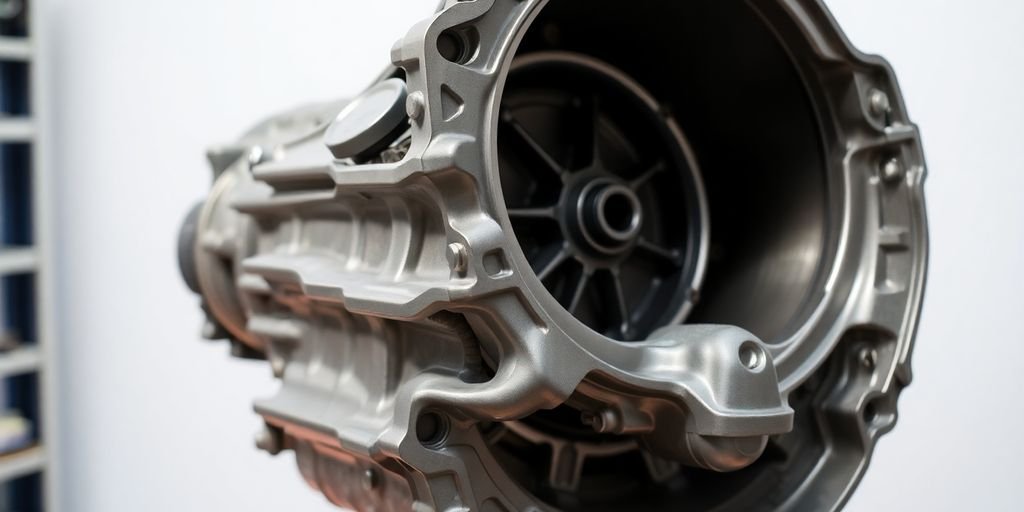So, you’ve got a Honda and you’re wondering about its transmission, especially here in Australia. Maybe you’ve heard some things, or perhaps you’re just trying to keep things running smoothly. We’re going to break down what you need to know about Honda transmissions in Australia, covering common issues, especially with CVTs, and how to find the right help when you need it. It’s not as complicated as it sounds, and a little info goes a long way.
Key Takeaways
- Regularly changing your Honda’s transmission fluid, especially for CVT models, is important. Dark or dirty fluid can be a sign that it’s time for a service.
- While solenoids can sometimes be replaced by general mechanics, more complex CVT issues like pulley or belt problems often require a specialist.
- Finding a mechanic who specializes in transmissions, particularly CVTs, can make a big difference in getting the right diagnosis and repair.
- Driving habits can affect how long your CVT lasts. Gentle acceleration and avoiding harsh braking can help prolong its life.
- Online platforms and customer reviews can help you locate reputable transmission specialists across Australia for your Honda.
Understanding Honda Transmission Issues in Australia

When your Honda starts acting up, especially with the transmission, it can be a real headache. Many Honda owners in Australia have run into similar problems, and it’s good to know what you’re dealing with. The most talked-about issues often revolve around the Continuously Variable Transmission (CVT), which Honda has used in many of its popular models.
Common Honda Transmission Problems
Beyond the CVT, other transmission types can also show signs of wear. You might notice things like rough shifting, slipping gears, or even a complete loss of power. Sometimes, it’s as simple as needing a fluid change, but other times it points to more complex internal issues. It’s not uncommon to hear about transmission warning lights coming on, which is always a sign to get it checked out sooner rather than later.
CVT Transmission Reliability Concerns
Honda’s CVTs have had a mixed reputation. While they offer good fuel economy and a smooth driving experience when they’re working right, some models have been prone to problems. Common complaints include a juddering or shuddering sensation, especially at lower speeds, and a feeling of hesitation when accelerating. These symptoms can sometimes be linked to the transmission fluid degrading or the internal components wearing out.
Recognizing Early Warning Signs
Paying attention to how your car feels is key. Unusual noises, like whining or clunking, are a big red flag. If you notice any changes in how the car shifts gears, or if it feels like it’s not engaging properly, don’t ignore it. A burning smell from the transmission area or visible leaks are also serious indicators that something isn’t right. Catching these issues early can often prevent more costly repairs down the line.
It’s easy to put off transmission checks, especially if the car seems to be running okay. But transmissions are complex systems, and small problems can quickly turn into major ones if left unchecked. Regular maintenance, like checking and changing the transmission fluid, is one of the best ways to keep things running smoothly.
Expert Repair Services for Honda Transmissions
When your Honda’s transmission starts acting up, finding the right help is key. General mechanics can handle basic services, but for more complex issues, especially with CVTs, a specialist is often the way to go. These shops usually have the specific tools and knowledge needed for Honda’s unique transmission designs.
Regular transmission fluid services are incredibly important for keeping your Honda running smoothly. Think of it like changing the oil in your engine; the transmission fluid keeps everything lubricated and cool. Neglecting this can lead to premature wear and costly repairs down the line. For CVTs, this service is even more critical, as the fluid plays a vital role in how the transmission operates.
It’s a good idea to know what kind of fluid your Honda needs. Some owners have found success using fluids like Eneos CVT, which is noted to be smoother than Honda’s own HMMF or HCF-2, especially in models like the Jazz. However, always confirm the correct fluid type for your specific model to avoid making things worse.
Getting the transmission fluid changed regularly can make a big difference in how your car feels and lasts. It’s a simpler fix than a full rebuild and can often sort out those annoying judders or hesitations you might be feeling. Don’t wait until it’s too late; keeping up with these services is a smart move for any Honda owner.
CVT Transmission Maintenance and Longevity
Keeping your Honda’s Continuously Variable Transmission (CVT) in good shape is pretty important if you want it to last. These transmissions are a bit different from the old-school automatics, and they need specific care. Regular fluid changes are probably the single most important thing you can do to keep your CVT happy. Think of the fluid like the lifeblood of the transmission; it lubricates, cools, and helps manage the pressure that makes the CVT work. When it gets old and dirty, it just can’t do its job as well, and that’s when problems start to pop up.
Recommended CVT Fluid Types
Using the right fluid is non-negotiable. Honda has specific formulations for their CVTs, and you can’t just put any old automatic transmission fluid in there. For many Honda models, you’ll see references to HMMF (Honda Multi Matic Fluid) or HCF-2. Some people have also had good luck with aftermarket fluids like Eneos CVT fluid, which some say is smoother than the Honda-specific ones. It’s always best to check your owner’s manual or consult a specialist to confirm the exact type your car needs. Using the wrong fluid can cause serious damage, so don’t guess on this one.
Frequency of Transmission Fluid Changes
This is where things get a bit debated, but generally, sticking to shorter intervals than what some manufacturers might suggest for
Locating Honda Transmission Specialists Across Australia
Finding the right place to get your Honda transmission looked at in Australia can feel like a big task. You want someone who knows what they’re doing, especially with those CVTs. It’s not like just any old mechanic can handle them, right? You need a specialist. These places often have the specific tools and the know-how that general garages just don’t have.
When you’re searching, think about what kind of service you need. Is it a routine fluid change, or is something more serious going on, like a transmission shudder? Some shops are better equipped for certain jobs than others. It’s always a good idea to check out what services they advertise and if they mention working on Honda CVTs specifically.
Don’t just go with the first name you see. Do a little digging. Look for reviews, ask friends, or check online forums. Getting a second opinion or hearing about someone else’s experience can save you a lot of hassle and money down the line.
Here’s a general idea of what you might expect to pay for some common services, though prices can really vary depending on where you are in Australia and the specific shop:
| Service Type | Estimated Price Range (AUD) |
|---|---|
| Transmission Fluid Change | $150 – $300 |
| CVT Fluid Flush & Replacement | $250 – $500 |
| Solenoid Repair | $500 – $1500+ |
| CV Joint Boot Replacement | $200 – $400 |
Remember, these are just ballpark figures. A full transmission rebuild will naturally cost significantly more. It’s always best to get a detailed quote before agreeing to any work.
Addressing Specific Honda Transmission Faults

Solenoid Issues and Repairs
When your Honda’s transmission starts acting up, solenoids are often a suspect. These little electronic valves control the flow of transmission fluid, and if one gets sticky or fails, it can cause all sorts of problems. You might notice rough shifting, delayed engagement, or even a complete loss of power. Sometimes, a good cleaning and fresh fluid can sort it out, but often, a faulty solenoid needs to be replaced. It’s not usually a job for a DIYer, as accessing and replacing them can be tricky, often requiring the transmission pan to be removed.
Pulleys and Belt Concerns
For Honda models equipped with Continuously Variable Transmissions (CVTs), the pulleys and the belt connecting them are the heart of the system. Wear and tear on these components can lead to a range of symptoms. A common issue is a whining noise that changes pitch with engine speed, or a feeling of slipping, especially when accelerating. If the belt stretches or the pulleys get damaged, it can cause hesitation or a lack of power. Regular fluid changes are key to keeping these parts healthy.
Troubleshooting Transmission Jerking
That sudden jolt or jerk from your transmission can be unnerving. It often points to issues with how the transmission is engaging gears or managing fluid pressure. For CVTs, this could be related to the belt and pulley system not adjusting smoothly, or perhaps an issue with the transmission control unit. In traditional automatics, it might be a problem with the torque converter or clutch packs. Sometimes, a simple transmission fluid flush and refill with the correct fluid can make a surprising difference, as seen in some owner experiences where old, degraded fluid caused similar symptoms. If the jerking persists, it’s a clear sign to get it checked by a professional.
It’s easy to dismiss minor transmission quirks as just ‘how the car is,’ but ignoring them can lead to much bigger, more expensive problems down the line. Paying attention to unusual noises, shifts, or hesitations is your car’s way of telling you something needs attention.
The Role of Transmission Specialists in Australia
When your Honda’s transmission starts acting up, especially if it’s a CVT, you really want someone who knows these things inside and out. General mechanics can do basic stuff, sure, but for anything more complex, a specialist is the way to go. They’ve got the specific tools and the know-how that a regular shop might not have. Think about it like this: you wouldn’t go to a general practitioner for heart surgery, right? Same idea here.
Benefits of Specialist Knowledge
Specialists spend their days working on transmissions, particularly Honda’s. This means they’re familiar with the common failure points, the specific fluids needed, and the right way to service them. They can often diagnose problems faster and more accurately than someone who only sees a few transmissions a month. This focused experience can save you time and money in the long run.
Tools and Equipment for Transmission Repair
Working on transmissions, especially CVTs, requires special equipment. This can include things like diagnostic scanners that can read transmission-specific codes, specialized fluid flushing machines, and tools for precise component replacement. Without the right gear, a repair might not be done correctly, leading to more issues down the road. Specialists invest in this equipment because it’s what they need to do their job right.
Cost-Effective Repair Solutions
While it might seem like a specialist will cost more upfront, they often provide more cost-effective solutions. Because they can diagnose issues quickly and have the right parts and procedures, they can often fix the problem the first time. This avoids repeat visits and the associated costs. Plus, they can advise on preventative maintenance that might save you from a major breakdown later on. It’s about getting the job done properly to avoid bigger bills.
Finding a good transmission specialist means you’re more likely to get a repair that lasts. They understand the nuances of how these transmissions work and what can go wrong. It’s about trusting someone who truly understands the complex mechanics involved.
Wrapping Up Honda Transmission Care
So, dealing with Honda transmissions in Australia, especially the CVTs, can feel a bit tricky. We’ve seen that regular fluid changes are a big deal, and sometimes a simple flush can make a surprising difference, like one owner found with their car feeling almost new. But, it’s not always a magic fix, and serious issues might need a specialist. Finding a good mechanic who knows their way around these transmissions is key. Services like AutoGuru can help you find local experts, and remember, keeping up with maintenance is way better than dealing with a breakdown. It seems like staying on top of fluid changes and knowing when to call in the pros is the best way to keep your Honda running smoothly on Aussie roads.








